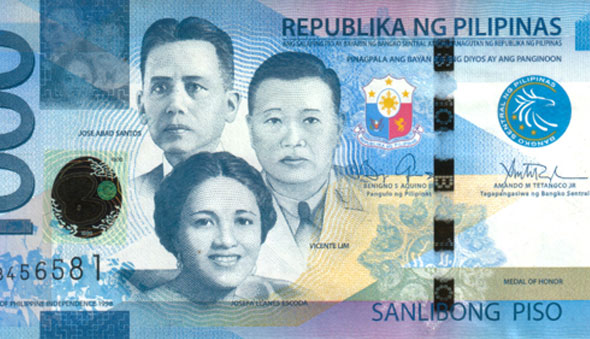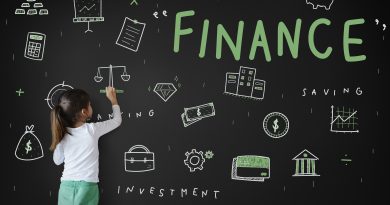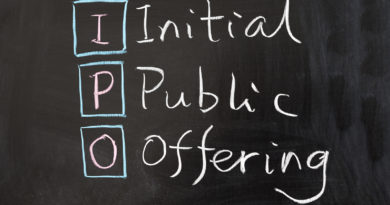Billionaires’ Secrets
How do the ultra-rich go from “mere” multi-millionaires to billionaires? A closer analysis of the 40 richest Filipinos provides eight answers
By Carlos Gonzales
Let me tell you about the very rich. They are different from you and me. – F. Scott Fitzgerald in “The Rich Boy”
What is a million pesos nowadays? Or even a few millions? Having tens of millions is more like it. Hundreds of millions is already mind-boggling. But a billion pesos? Let alone P92,000,000,000? Our brains somehow refuse to grasp the possibility. Jaime Zobel de Ayala and his family are worth exactly that. According to Forbes Asia’s “The Philippines 40 Richest” list for 2007, four Filipinos have reached billion dollar status. Aside from the Zobels are Henry Sy, Lucio Tan, and newly minted billionaire Andrew Tan. In Philippine peso terms, all 40 are billionaires.
Most of the names on the list are familiar. That’s because they are the same families that have ruled the Philippine economy for decades. However, there are a few new faces that neither belong to the old rich nor are considered political cronies. And somehow, that should put billionaire status within the realm of possibility for those of you who harbor such ambition.
So how did these billionaires become so rich? Is it because of race? After all, almost half are pure Chinese, with at least five being first generation Chinese immigrants from Fujian (where most of our taipans coincidentally come from). Around 15% are Spanish (most of them Basque). Sure, many Filipinos are mixed, if you think of it, so it’s hard to pinpoint anyone on the list who is Filipino of pure Malay blood.
Is it political connections? A good number of these billionaires are known Marcos cronies, or at least have benefited one way or another from that regime. And many are close to a previous and/or the current administration.
Maybe it’s because they were born rich in the first place. At least half of those on the list came from wealthy families and a bigger proportion were already relatively rich when they hit the bigger jackpot. Just seven can be easily identified as true rags-to-riches stories. Perhaps we are being too cynical. Could it be plain hard work and sheer luck?
We went through the list, digging into the details of how they struck it rich. A few are actually mysterious, with little information written about them. For the most part, however, we were able to find common threads of how they became billionaires. They are not secrets in the sense of the unknown but in the sense that we mere mortals just don’t apply them. Whether you want to be on the Forbes list someday or just dream of living in Forbes Park (no mean feat after all), you can learn a thing or two from these billionaires. (And may we add, try to pick the better lessons.)
No. 1: They control their business
There is not a single billionaire on the list who is an employed corporate executive or a self-employed professional. Certainly, they do hold executive positions and some are doctors (Dr. Rolando Hortaleza), lawyers (Felipe Gozon, Manuel Zamora), engineers (David Consunji, Magdaleno Albarracin Jr.), and CPAs (Manuel Villar, Alfonso Yuchengco, Menardo Jimenez). But all own their companies. They became billionaires not by practicing their profession, but by starting their own business.
Around 12 inherited the family business (Jaime Zobel de Ayala, Vivian Que Azcona, Iñigo Zobel, Enrique Aboitiz, Alfonso Yuchengco, Gilberto Duavit Jr., Wilfred Steven Uytengsu, Lourdes Montelibano, etc.). But about two-thirds are entirely self-made, including those who, while coming from well-off families, built their empire themselves. It’s the same ratio for the Forbes 400, the list of the richest people in the world.
Only a handful of the family holding or flagship companies are private; majority of them are publicly listed (of course, many hold other, usually smaller, companies that remain private). Nevertheless, these billionaires control the majority or at least significant shares of their companies.
No. 2: They have a core cash cow
One distinct strategy of billionaires is they look for that one core cash cow (or two). That’s the kind of money that will fill their coffers come hell or high water. For some, it’s commodities like sugar (Antonio Roxas), nickel (the Zamoras), or cement (the group of Ramon del Rosario). For others, it’s key infrastructure like power (Oscar Lopez), ports (Enrique Razon Jr.), transportation (Enrique Aboitiz), and telecommunications (Manuel Pangilinan).
Then there are those cash cows from consumer goods, like food (Tony Tan Caktiong, John Gokongwei Jr., Betty Ang), milk (Wilfred Steven Uytengsu), medicines (Vivian Que Azcona, Beatrice Campos, Mariano Tan), personal care (Dr. Rolando Hortaleza), and so-called sin products (Lucio Tan, Eduardo Cojuangco Jr.)
The rest are heavy on financial services (George Ty, Alfonso Yuchengco, Frederick Dy, Jesus Tambunting), real estate (Jaime Zobel de Ayala, Henry Sy, Andrew Tan, Manuel Villar, Andrew Gotianun, David Consunji), and media (Emilio Yap, Gilberto Duavit Jr., Menardo Jimenez, Felipe Gozon, Marixi Prieto).
It’s this core cash cow that fuels their growth and diversification into other industries. This also allows them to take riskier bets, knowing that they can afford a loser here and there as long as the money keeps coming from their cash cow.
Why are these cash cows? They generate a lot of money for different reasons. Some are basic goods that everyone consumes like electricity, water, transportation, and telecommunications. Others are purchased by masses of people, like sugar, milk, medicines, and noodles or in bulk by industries, such as cement, nickel, and shipping. In other words, households and companies buy more commodities than other types of products. Burgers and skin-whitening lotions are more of the exception than the rule.
Banks, insurance companies, and real estate are cash-heavy sectors. Banks are swamped with deposits, interest income from loans, and fees for services. Insurers get a steady flow of premiums. And real estate developers earn not just from selling or leasing properties but also from financing them, creating streams of cash.
No. 3: They build a huge moat
Billionaires dominate many of the industries they serve. And they do these through three ways. First, they enter an industry with a very high cost of entry. How many can afford to put up a power plant or television broadcasting company? How many can get into mining, shipping, and the airline industry? Do you have any idea how much capital is required to start a bank or brewery?
It’s not just the huge investment requirement that bars almost everyone to get into the industries dominated by these billionaires. There are also regulatory limitations, the second way. How many are awarded a telecommunications or water distribution license? And in many cases, like telecommunications and airlines, the market can really just support a few major players.
However, there are instances when monopoly or oligopoly occurs not because of market forces, but due to political favors, the third way. A number of major companies were started or acquired that can be traced to crony capitalism.
For some, especially the new billionaires, their companies have dominated their competition through the strength of their brand. It’s relatively easy to start a quick service restaurant and make money from sales, franchise fees, royalties, and leases. But Jollibee lords it over other players, including global chains, due to its brand, established over the years through effective marketing and appealing to Filipino tastes. It’s also possible to concoct beauty products at your kitchen table to get into the personal care business. But Splash Corporation has successfully battled multinational brands by developing products that resonate with Filipina consumers.
No. 4: They pursue profits, not passion
Contrary to the common advice of “do what you love and the money will follow,” billionaires simply follow the money. They spot opportunities a lot better because they are open to what’s out there. Those who are too focused on looking for a specific opportunity tend to miss other, often better, prospects.
Many of these billionaires attribute their success to “luck” – that they were at the right place at the right time. But a study by UK researcher Prof. Richard Wiseman (and author of the best-seller “The Luck Factor”) showed that so-called lucky people are “1) skilled at creating and noticing opportunity, 2) make lucky decisions by listening to their intuition, 3) create self-fulfilling prophecy via positive expectations, and 4) adopt a resilient attitude that transforms bad luck to good.” That’s why when “luck” comes along, according to the book “All the Money in the World”, the global Forbes 400 billionaires were smart enough to spot and leverage it.
For the most part, Filipino billionaires saw opportunities to make money, not necessarily because they were experts in those particular fields. Lucio Tan didn’t know anything about banking or airline operations – his background is in tobacco and liquor manufacturing. Manuel Villar, an accountant turned entrepreneur, was just delivering sand and gravel to construction sites when he decided to get into property development. Andrew Gotianun was financing second-hand cars before he got into real estate.
The Gokongweis have ventured into airlines and telecommunications, where there were already entrenched players, yet they pushed forward as they saw opportunities. Ramon del Rosario exited the cement business and is now looking for better opportunities. The Roxas clan, sugar barons of old, have restructured their company into an investment holding firm to go beyond their traditional business.
Of course, pursuing profits and not passion doesn’t mean they don’t care about their businesses. They do; but they’re not married to them. If it means divesting from a company or completely exiting an industry, they will do so if it’s no longer profitable.
No. 5: They use leverage to the hilt
If you think billionaires use their money to buy companies, think again. Sure, they put in some equity, but for the most part, they finance deals by borrowing from local and foreign banks or by issuing corporate bonds.
It’s not surprising therefore that a quarter of the 40 richest Filipinos run their own banks. It’s a good, cheap source of financing. Not all billionaires use debt; some have grown organically primarily because their core cash cow is more than enough. But those that run conglomerates – the tycoons and taipans – are shrewd users of leverage. Lucio Tan purchased PAL and funded its expansion using loans from foreign and local banks, including government financial institutions. Using debt to finance a corporate takeover or keep a company afloat can make sense if the target acquisition’s cash cow keeps on churning.
As bankers – and billionaires – have realized, the bigger you are, the harder it is to fail. So even those that defaulted on their huge loans are able to recover as creditors have to restructure them or even write some off. So they borrow to the hilt. For many billionaires, debt is not a dirty word.
According to the authors of “All the Money in the World,” many of Forbes 400 took huge risks: “Risk takers think big and leverage whatever assets they have but they also know how to avoid disaster.” They also don’t see huge personal debt as a catastrophe because they have an “unshakeable confidence on success that it overwhelms any concern for failure.”
No. 6: They stay close to power
There is a close symbiosis between politicians and capitalists in the Philippines and in other Southeast Asian countries. Our economies are ruled by a few families indeed. And why is this so? It’s politics as usual.
Businessmen contribute large amounts to political campaigns, usually of opposing parties, to gain favor regardless of who wins. It’s not unusual for billionaires to actively campaign for and support certain candidates. In fact, a number of them have entered politics as legislators, Cabinet members, or local government officials.
Staying close to power can mean getting government concessions, winning government contracts, lobbying successfully for or against related legislation, borrowing from government banks at favorable terms, or maintaining a monopoly.
At least half of these billionaires have one way or another benefited from their close ties with past regimes and/or the current administration. They’re not all crooks, but being in the good graces of whoever is in power can certainly open doors. Of course, some on the Forbes 40 list are quite apolitical and have managed to grow their business – and their personal wealth – without cozying up to local and national officials.
No. 7: They think (very) big
You have to hand it to them. However way they got their breaks – family wealth, political connections, or simply a great opportunity – they made their billions by thinking big. These aren’t small-minded men and women.
They didn’t reach their status by accident. They had a vision and pulled it off. They can see beyond what ordinary people can’t see.
Henry Sy opened his first supermall in an area that was then practically undeveloped. George Ty, then just 25 years old, applied for a banking license even “with no banking experience and very little English.” Jose Campos started as a small drugstore called United Drug, which later became Unilab. David Consunji was just a concrete inspector before he decided to get into the construction business. Manuel Pangilinan was just a sales trainee and later overseas contract worker in Hong Kong before he met Indonesia’s Anthoni Salim to form First Pacific Corp.
And they’re not afraid to take on the big boys. John Gokongwei Jr. manifested this, taking on PAL with his Cebu Pacific; Smart and Globe with his Sun Cellular; and San Miguel and Nestle with his C2 tea drink. Dr. Rolando Hortaleza resisted offers from multinationals to buy him out to retain Splash as a true Filipino brand. Tony Tan Caktiong decided to stick it out with Jollibee instead of switching to a McDonald’s franchise when the global giant set up on Philippine soil.
No. 8: They are tough as nails
These billionaires have different personalities – some love the limelight, others are publicity-shy; some are feared by their people, others well-loved. But they are all tough. Some of them are seen as greedy and ruthless, and they don’t lack enemies. One thing is for sure – they are highly competitive. They just love the game, and money is often a way to keep score.
People like them don’t survive and thrive in business by being soft amidst adversities, bankruptcies, political harassment, and fierce competition.
For one, they have a huge appetite for risk. True, some are quite conservative, preferring to stick to what they know best, and not venturing into the unknown. But certainly, these founders doggedly grew their companies through decades. Many of them, however, take far greater risks, going into new territories that are alien to them, if it meant opportunities to make more profits. Empire builders such as Jaime Zobel de Ayala, Lucio Tan, George Ty, Oscar Lopez, John Gokongwei Jr., Enrique Aboitiz, and Alfonso Yuchengco are perfect examples.
The poor immigrants among them faced extreme challenges. Henry Sy was a Chinese immigrant who started a small shoe store. Lucio Tan started as a janitor in a cigarette factory. As a child, Andrew Tan used to share a tenement apartment with four other families in Hong Kong. Andrew Gotianun lost his father when he was just 20, and he had salvage ships to supplement the family income during and after the war.
Even those from rich families but lost everything during the Second World War showed they’re tough as nails. George Ty’s family-owned Wellington Flour Mills ran into financial difficulties back in the 1950s and he had to start over. Iñigo Zobel’s father, the late Enrique Zobel, suffered during that war. His father was imprisoned by the Japanese and he had to take care of his family as a teenager, working as an engine mechanic with the American army. John Gokongwei Jr.’s family lost their fortune when his father died, and he had to trade rice, clothing, and scrap metal when he was a young teen. Alfonso Yuchengo’s own father, Don Enrique, suffered under the Japanese, who ordered his China Insurance Company (the precursor to Malayan Insurance) to be liquidated. Alfonso had to buy and sell soap to support his family. Despite the odds, they pushed their limits to get to where they are.
So as we can see, the rich, i.e. the ultra-rich, are really different from you and me.




I am very encouraged by this information of the Philippines’ Top Billionaires. Like them too, i am going through a lot of troubles in my small construction company. Because i was not born rich, i have a hard time in my finances. I have obtained personal loans and credit lines to keep going. Unfortunately, i failed several of my payment schedules and have been harassed. It really made me depressed. However, it did not makes me give up. I continue to dream that one day,as a civil engineer, i’ll be successful in the real estate business.
The information you posted above, give me hope and strength to pursue my dreams. Yes, it is true that they’re different from you and me but this difference will help me on my way to the top.